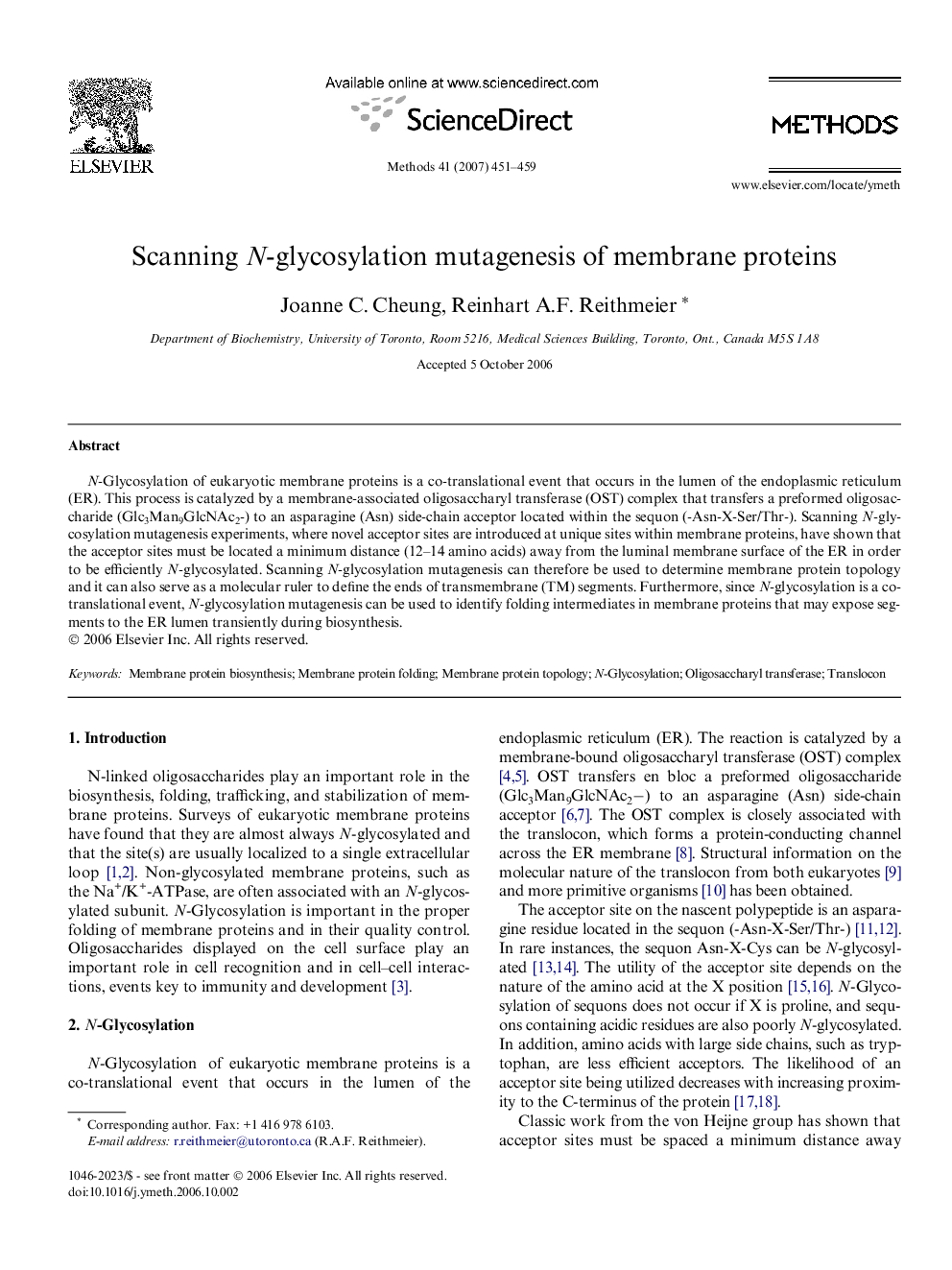| Article ID | Journal | Published Year | Pages | File Type |
|---|---|---|---|---|
| 1994331 | Methods | 2007 | 9 Pages |
N-Glycosylation of eukaryotic membrane proteins is a co-translational event that occurs in the lumen of the endoplasmic reticulum (ER). This process is catalyzed by a membrane-associated oligosaccharyl transferase (OST) complex that transfers a preformed oligosaccharide (Glc3Man9GlcNAc2-) to an asparagine (Asn) side-chain acceptor located within the sequon (-Asn-X-Ser/Thr-). Scanning N-glycosylation mutagenesis experiments, where novel acceptor sites are introduced at unique sites within membrane proteins, have shown that the acceptor sites must be located a minimum distance (12–14 amino acids) away from the luminal membrane surface of the ER in order to be efficiently N-glycosylated. Scanning N-glycosylation mutagenesis can therefore be used to determine membrane protein topology and it can also serve as a molecular ruler to define the ends of transmembrane (TM) segments. Furthermore, since N-glycosylation is a co-translational event, N-glycosylation mutagenesis can be used to identify folding intermediates in membrane proteins that may expose segments to the ER lumen transiently during biosynthesis.
